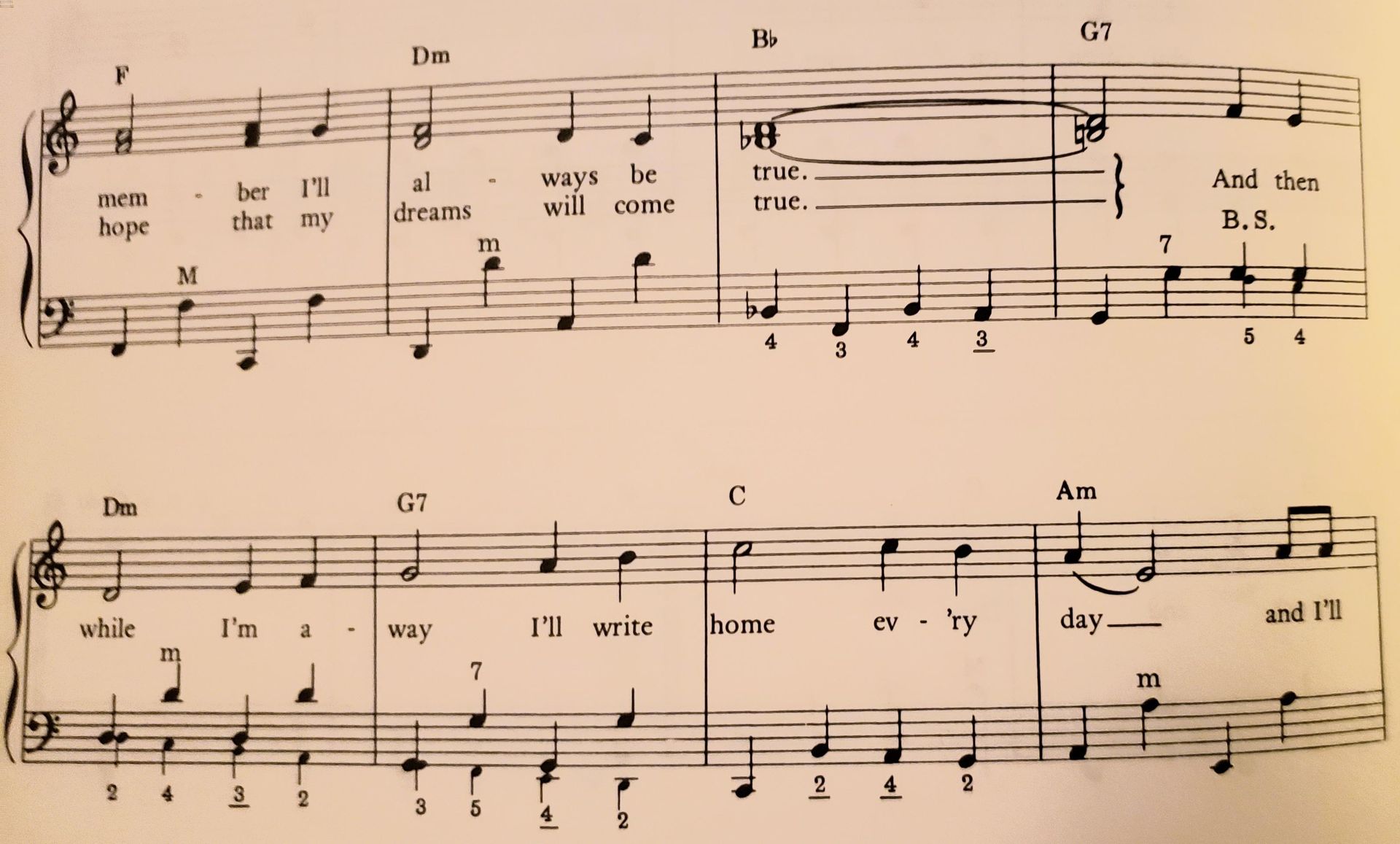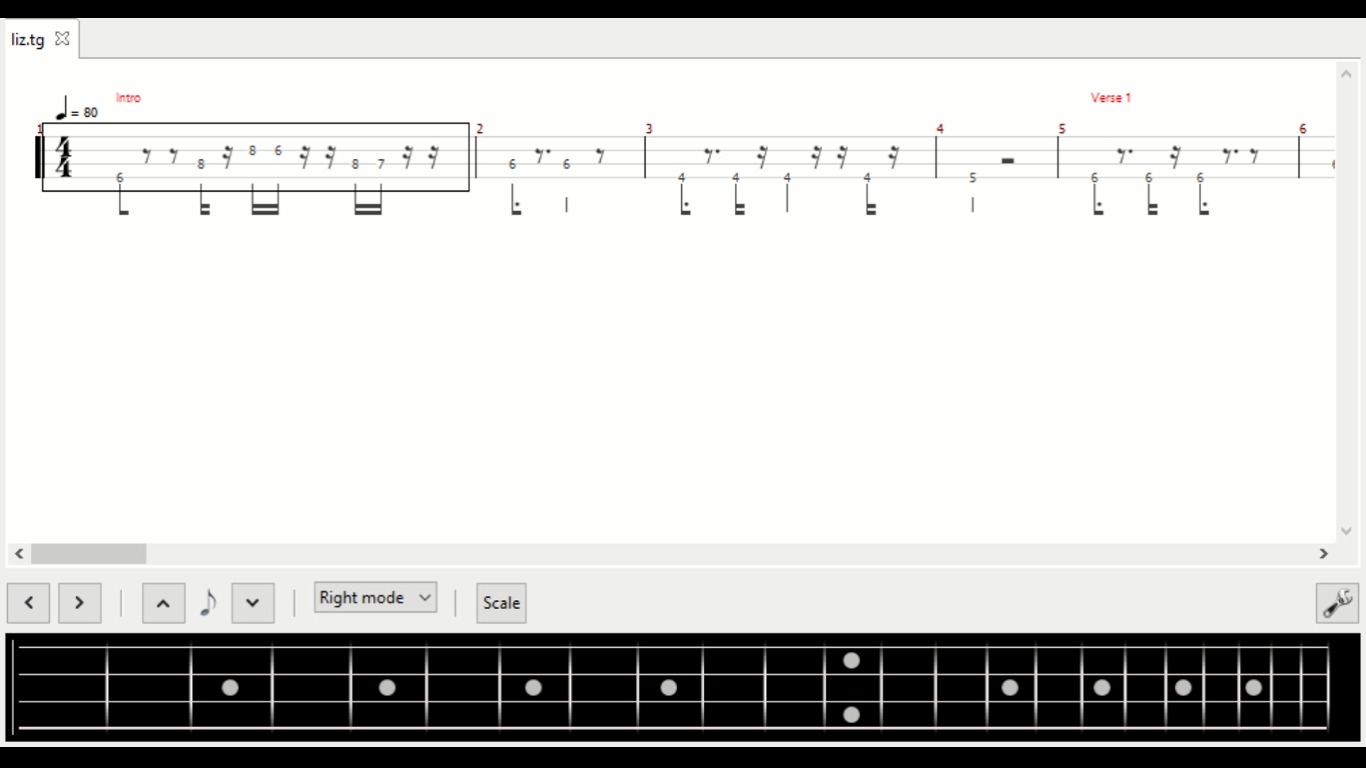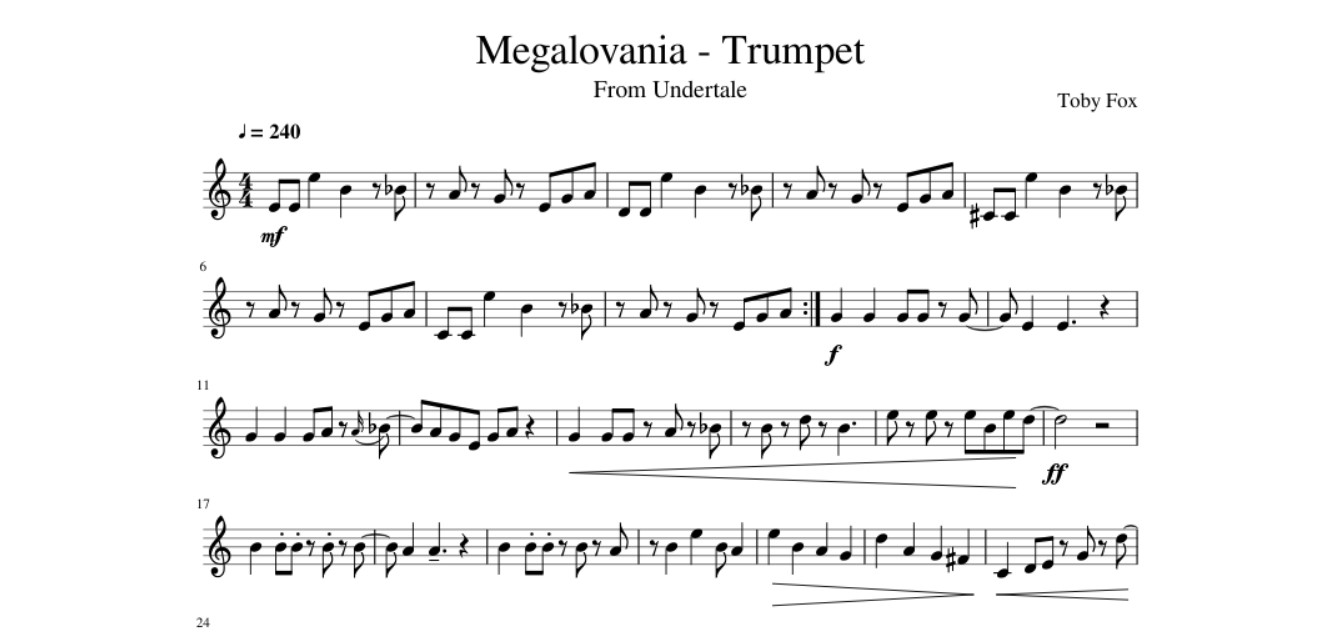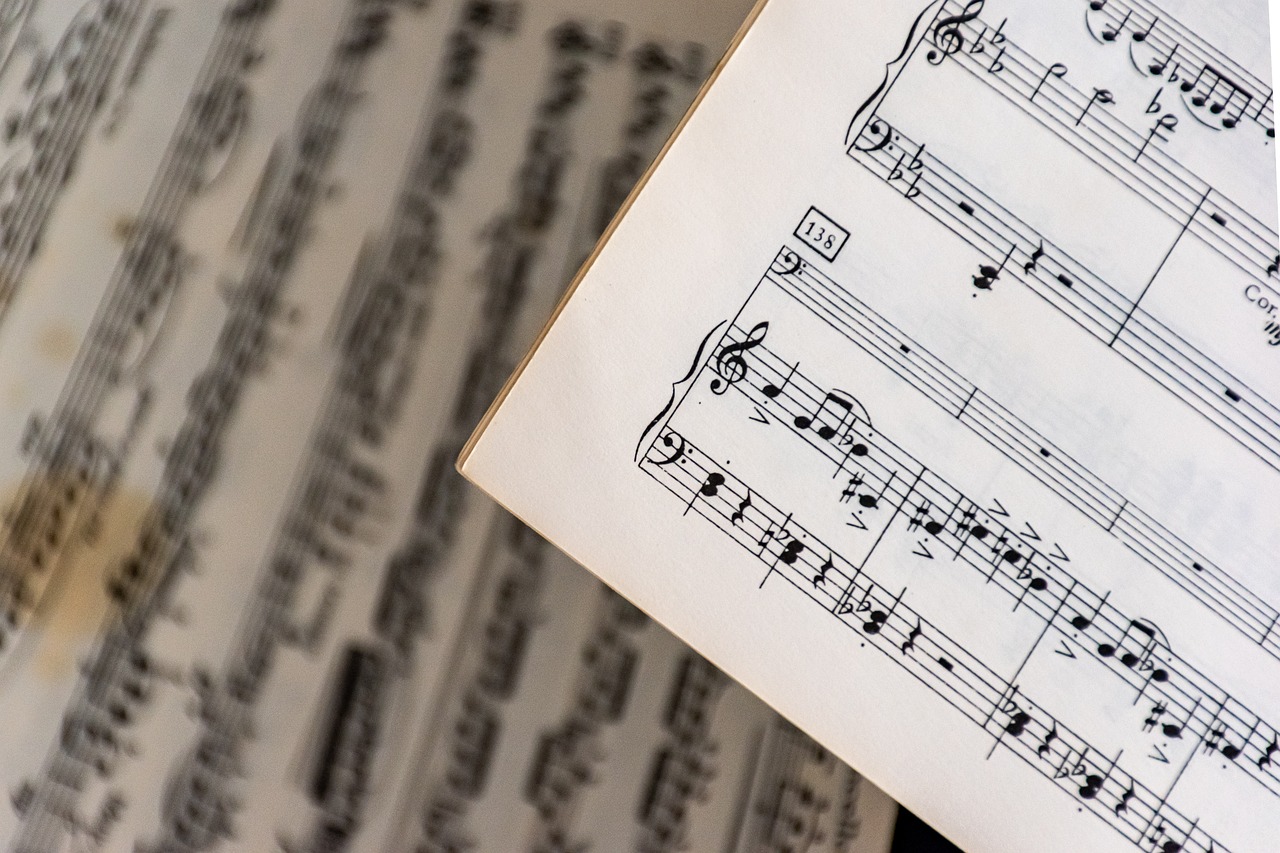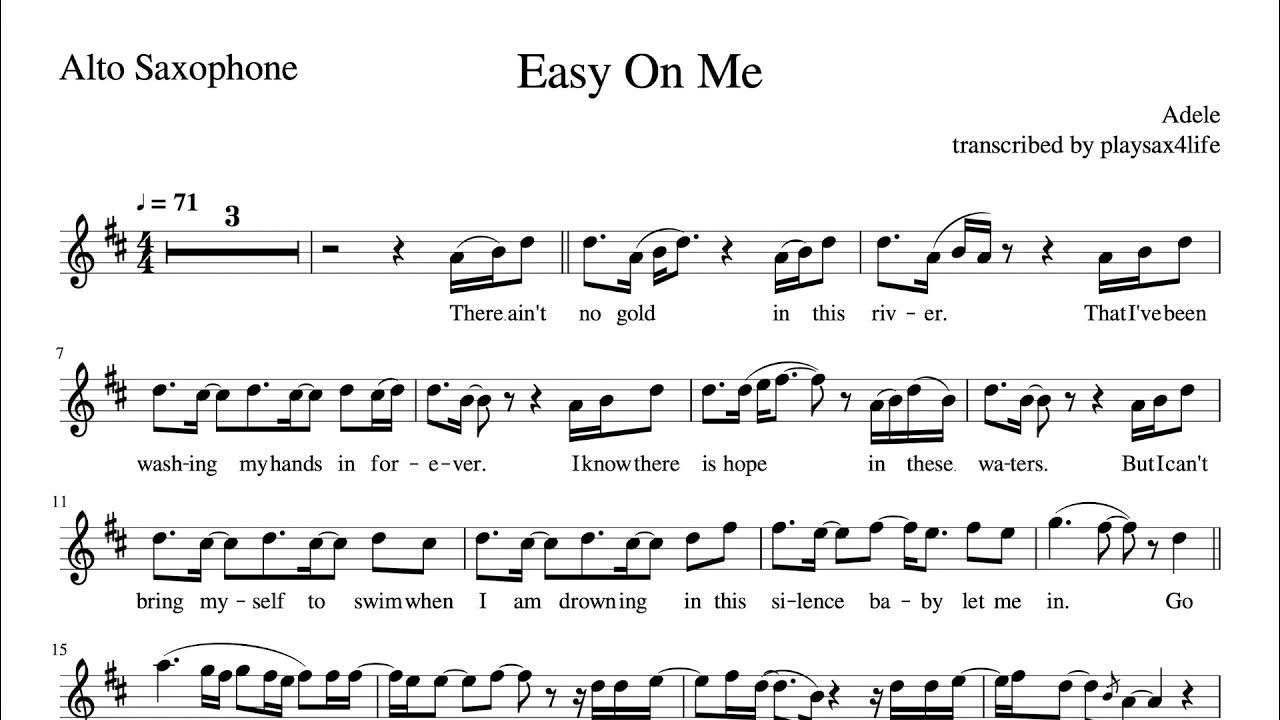Home>Instruments>Bass>How To Read Bass Sheet Music
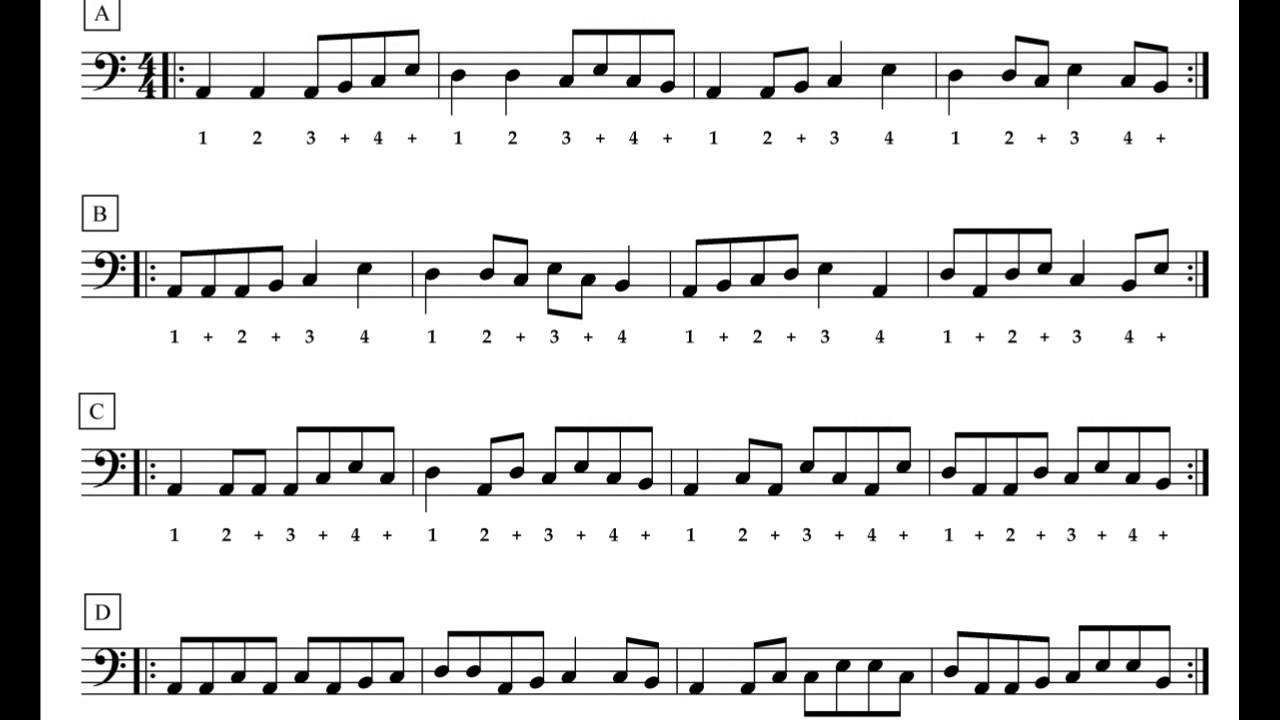

Bass
How To Read Bass Sheet Music
Published: November 27, 2023
Learn how to read bass sheet music and master the art of playing the bass guitar. Get expert tips and techniques for understanding bass notation and improving your bass playing skills.
(Many of the links in this article redirect to a specific reviewed product. Your purchase of these products through affiliate links helps to generate commission for AudioLover.com, at no extra cost. Learn more)
Table of Contents
- Introduction
- Understanding the Staff
- Identifying Notes on the Bass Clef
- Understanding Rhythm and Time Signatures
- Reading Bass Music Notation
- Recognizing Key Signature and Chord Symbols
- Techniques for Sight-Reading Bass Sheet Music
- Common Symbols and Terms in Bass Sheet Music
- Tips for Practicing and Improving Bass Sight-Reading Skills
- Conclusion
Introduction
Bass sheet music is the lifeline of any bassist. Whether you’re a beginner or an experienced player, having the ability to read and interpret bass sheet music is crucial for expanding your musical repertoire and playing with confidence. While it may seem daunting at first, with a solid understanding of the basics, you can unlock a world of musical possibilities.
The bass clef is the foundation of bass sheet music. It provides a visual representation of the notes and rhythms that you’ll be playing. By learning how to read the staff, identify notes, understand rhythm and time signatures, and recognize key signatures and chord symbols, you’ll be well on your way to becoming a proficient sight-reader.
In this article, we’ll take a comprehensive look at how to read bass sheet music. We’ll cover the essential components, techniques, and tips that will empower you to confidently tackle any piece of sheet music that comes your way. So, grab your bass guitar, sit back, and let’s dive into the wonderful world of bass sheet music!
Understanding the Staff
The staff is the foundation of musical notation. It consists of five horizontal lines and four spaces where notes are written. For bass guitar, the staff is referred to as the bass clef. Each line and space represents a different pitch.
Starting from the bottom line and moving upwards, the lines of the bass clef staff represent the notes G, B, D, F, and A. Remember the phrase “Good Boys Do Fine Always” to help you remember the names of the lines.
The spaces between the lines represent the notes A, C, E, and G. Memorize the phrase “All Cows Eat Grass” to help you remember the names of the spaces.
It’s important to note that the notes on the bass guitar are an octave lower than they appear on the staff. For example, the bottom line of the bass clef represents the note E on the bass guitar. This means that when you see a note on the staff, you will play it one octave lower on your bass guitar.
Along with the lines and spaces, the staff also contains other symbols and markings that provide additional information about the music. These include the clef symbol, which in this case is the bass clef, and the key signature, which indicates the key the music is written in.
By understanding the layout and symbols of the staff, you’ll be able to accurately read and interpret the notes and markings in bass sheet music. This is the foundation upon which your sight-reading skills will be built, so take the time to become familiar with the staff and its components.
Identifying Notes on the Bass Clef
The bass clef is specifically designed for instruments with lower pitches, like the bass guitar. It provides a visual representation of the notes that you’ll be playing on your bass guitar.
Each of the lines and spaces on the bass clef staff represents a different note. Let’s go through the notes on the lines first:
- The bottom line represents the note E.
- The second line from the bottom represents the note G.
- The middle line represents the note B.
- The second line from the top represents the note D.
- The top line represents the note F.
Now, let’s move on to the spaces:
- The space between the bottom line and the second line represents the note F.
- The space between the second line and the middle line represents the note A.
- The space between the middle line and the second line from the top represents the note C.
- The space between the second line from the top and the top line represents the note E.
Remembering these notes can be made easier with the help of mnemonics. An example of a popular mnemonic for the bass clef lines is “Every Good Boy Deserves Fudge.” And for the spaces, you can use “All Cows Eat Grass.” Using these mnemonics can make it quicker and easier to recall the notes on the bass clef staff.
It’s important to note that, as a bass guitarist, you will play the notes on the staff one octave lower on your instrument. This means that if you see an E on the bottom line of the bass clef, you will play the low E on your bass guitar.
By familiarizing yourself with the notes on the bass clef staff, you’ll be able to quickly identify and play the correct pitches on your bass guitar. With practice, reading notes on the bass clef will become second nature, allowing you to focus on the rhythm and musicality of the piece you’re playing.
Understanding Rhythm and Time Signatures
When reading bass sheet music, it’s not only important to identify the correct notes but also to understand the rhythm and timing of the music. This is where rhythm notation and time signatures come into play.
Rhythm notation is a system of symbols and markings that represent the duration and timing of each note and rest in the music. The most basic unit of rhythm is the whole note, which is typically represented by an open circle. The whole note is divided into smaller note values such as half notes, quarter notes, eighth notes, and sixteenth notes. Each note value has a corresponding rest symbol that indicates a period of silence or rest.
A time signature is a numerical symbol written at the beginning of a piece of music that indicates the number of beats in each measure and the note value that represents one beat. The most common time signature in bass sheet music is 4/4, also known as common time. The top number in the time signature represents the number of beats per measure, while the bottom number represents the note value that represents one beat.
For example, in 4/4 time, there are four beats per measure, and the quarter note represents one beat. This means that in each measure, you would count four beats and each beat would be equivalent to the duration of a quarter note.
Other common time signatures include 3/4 (three beats per measure, with the quarter note as the beat), 2/4 (two beats per measure, with the quarter note as the beat), and 6/8 (six beats per measure, with the eighth note as the beat).
Understanding the time signature is crucial for maintaining the correct rhythm and timing while playing bass sheet music. It helps you keep track of the beats and know when to play each note. Practice counting the beats and tapping your foot or using a metronome to develop a strong sense of timing.
In addition to the time signature, bass sheet music may also include other symbols and markings to indicate techniques like staccato (short and detached) or legato (smooth and connected). Pay attention to these symbols, as they can greatly affect the overall feel and interpretation of the music.
By familiarizing yourself with rhythm notation and time signatures, you’ll be able to accurately interpret the rhythmic patterns and timing of the music. This will help you play with precision and groove, elevating the overall musicality of your bass playing.
Reading Bass Music Notation
Bass music notation consists of various symbols and markings that convey important musical information. These notations provide guidance on pitch, duration, dynamics, and various playing techniques. Understanding these symbols is essential for accurately interpreting and playing bass sheet music.
The most basic element of bass music notation is the note. Notes are represented by oval shapes placed on the staff. The position of the note on the staff indicates the pitch, while the shape and stem direction convey the duration.
Here are some common note durations used in bass music notation:
- Whole note – represented by an open oval shape without a stem.
- Half note – similar to the whole note, but with a stem extending from the oval shape.
- Quarter note – similar to the half note, but with a filled-in oval shape.
- Eighth note – similar to the quarter note, but with a flag attached to the stem.
- Sixteenth note – similar to the eighth note, but with two flags or beams attached to the stem.
Rests are symbols that represent periods of silence in the music. They are essential for indicating when not to play. Rests follow the same duration conventions as notes and are written on the staff in the appropriate position.
In addition to notes and rests, bass music notation includes other important symbols and markings:
- Dots – placed next to a note, a dot increases its duration by half. For example, a dotted half note lasts for three beats instead of two.
- Ties – connect two or more notes of the same pitch, indicating that their durations should be combined into one long note.
- Slurs – curved lines that indicate a group of notes should be played smoothly, without separation.
- Articulation marks – symbols such as staccato dots or accents that indicate specific playing techniques or emphasis.
- Dynamics marks – symbols like “p” (piano, soft) or “f” (forte, loud) that indicate the relative loudness or softness of the music.
By familiarizing yourself with these symbols and markings, you’ll be able to accurately read and interpret bass sheet music. Take your time to study and understand these notations, and practice applying them to your playing.
Remember, reading bass music notation is not just about identifying the correct pitches and durations. It’s also about expressing the music with dynamics and phrasing, bringing it to life with your own interpretation and musicality.
Recognizing Key Signature and Chord Symbols
Key signatures and chord symbols are essential elements of bass sheet music. They provide valuable information about the underlying harmony and guide bassists in their playing. Understanding how to recognize key signatures and interpret chord symbols is crucial for accurately performing bass sheet music.
The key signature is a set of sharps or flats placed at the beginning of each staff line. It indicates the key in which the music is written. By recognizing the key signature, you can determine the notes that are naturally sharp or flat throughout the piece, allowing you to play with the correct accidentals without explicit notation.
For example, if a piece has one sharp in the key signature, this indicates that every F in the piece should be played as an F#. Knowing the key signature helps you anticipate and adjust your fingerings accordingly, creating a seamless and harmonically accurate performance.
Chord symbols are written above the staff and provide a shorthand representation of the harmony being played. They indicate the root note of the chord and its quality (major, minor, dominant, etc.). Often, chord symbols are written as letters and numbers, such as Cmaj7 (C major 7th chord) or Gm7 (G minor 7th chord).
Understanding chord symbols allows you to create basslines that align with the harmony of the song. By recognizing the chord symbols, you can identify the appropriate notes and scales to use for improvisation or embellishments.
Additionally, chord symbols can provide insight into the overall structure and progression of a song. By analyzing the chord changes, you can anticipate when to transition between chords and create smooth and cohesive basslines.
Developing proficiency in recognizing key signatures and chord symbols takes time and practice. It’s essential to familiarize yourself with common keys and chords used in your genre of music. This will not only improve your sight-reading skills but also enhance your ability to create melodic and harmonically pleasing basslines.
It’s worth noting that while key signatures and chord symbols provide valuable information, they don’t restrict your creative choices as a bassist. You can experiment with variations, inversions, and passing tones to add your unique flair to the music while still respecting the underlying harmony.
By honing your ability to recognize key signatures and interpret chord symbols, you’ll be able to navigate bass sheet music with confidence and contribute harmonically rich basslines to any musical setting.
Techniques for Sight-Reading Bass Sheet Music
Sight-reading is a valuable skill for any bassist, allowing you to quickly and accurately interpret and play music on the spot. While it may seem challenging, with consistent practice and the right techniques, you can improve your sight-reading abilities and become a more versatile musician.
Here are some techniques to help you with sight-reading bass sheet music:
- Scan the music: Before you start playing, take a moment to scan the sheet music. Look for key signatures, time signatures, chord symbols, and any other important markings. This will give you a general sense of the overall structure and help you anticipate any challenging sections.
- Focus on the rhythm: When sight-reading, it’s crucial to prioritize rhythm. Counting aloud or tapping your foot can help you stay on track and maintain a steady tempo. Make sure to pay attention to rests, note durations, and any syncopated rhythms.
- Use your scales and patterns: Having a solid knowledge of scales and common bass patterns can greatly aid in sight-reading. If you encounter a section with a fast-paced or unfamiliar melody, try to identify any scales or patterns that can be applied and use them as a framework.
- Look ahead: Train your eyes to look a few beats or measures ahead. This will give you time to anticipate upcoming notes and transitions, making your playing more fluid. Avoid fixating on individual notes and instead maintain a broader view of the music.
- Practice diverse musical styles: Expose yourself to a wide range of musical genres and styles in your sight-reading practice. This will help you develop versatility and adaptability, as different genres may require different playing techniques and interpretations.
- Start slow and gradually increase tempo: When beginning a sight-reading exercise, start at a comfortable tempo. Focus on accuracy and gradually increase the speed as you become more comfortable with the piece. Remember, it’s better to play slower and accurately than to rush and make mistakes.
- Don’t be afraid to simplify: If you encounter a particularly challenging passage, it’s okay to simplify it during sight-reading. Play the basic rhythm and the fundamental notes until you feel more comfortable with the music. As you gain more experience and familiarity, you can gradually add more complexity.
- Practice regularly: Sight-reading is a skill that improves with consistent practice. Dedicate regular practice sessions specifically to sight-reading. Use sight-reading exercises, sight-reading books, or even random pieces of sheet music to challenge yourself and build your repertoire.
Remember, sight-reading is a skill that develops over time. Be patient and persistent in your practice, and celebrate the progress you make along the way. With time and dedication, you’ll find that sight-reading becomes easier and more enjoyable, opening up new musical opportunities for you as a bassist.
Common Symbols and Terms in Bass Sheet Music
When reading bass sheet music, you’ll encounter various symbols and terms that provide important instructions and guidance for how to play the music accurately. Familiarizing yourself with these common symbols and terms will help you navigate the music and ensure a seamless performance.
Here are some of the most common symbols and terms you’ll come across in bass sheet music:
- Legato (Slur): A curved line connecting two or more notes. This indicates that the notes should be played smoothly, with no separation between them.
- Staccato: A dot placed above or below a note. This indicates that the note should be played short and detached, with a slight separation between each note.
- Accent: A symbol placed above or below a note, often a sideways V, that indicates the note should be played with emphasis or greater force.
- Pizzicato: A term written above the staff, often abbreviated as “pizz.” This indicates that the strings of the bass guitar should be plucked with the fingers instead of using the bow.
- Arco: A term written above the staff, often abbreviated as “a.” This indicates that the strings of the bass guitar should be played with the bow.
- Dynamics: Symbols such as “p” (piano, soft) and “f” (forte, loud) indicate the relative volume or intensity of the music. Other dynamic symbols include crescendo (gradually getting louder) and decrescendo (gradually getting softer).
- Repeat signs: Double barlines with two dots indicate a section of music should be repeated. The first time through, play until the repeat sign, then go back to the corresponding earlier repeat sign and play again.
- Coda: A symbol that looks like an oversized oval with a cross in it. This indicates that a specific section of music should be played in a different order or repeated.
- Fermata: A dot placed above a note or rest, indicating that it should be held for longer than its normal duration. The length of the pause is at the performer’s discretion.
- Tie: A curved line connecting two or more notes of the same pitch. This indicates that the notes should be played as a single, sustained note, with the duration of both notes combined.
Understanding these symbols and terms will greatly enhance your ability to interpret and perform bass sheet music with accuracy and musicality. Take the time to familiarize yourself with them and refer to a music glossary or notation guide as needed.
Remember, the more you encounter and practice reading bass sheet music, the more comfortable and confident you’ll become in recognizing and interpreting these symbols and terms. Keep practicing and exploring different pieces to expand your musical vocabulary and deepen your understanding of bass sheet music.
Tips for Practicing and Improving Bass Sight-Reading Skills
Sight-reading is a valuable skill for bassists that can greatly enhance your musicianship and versatility. Developing strong sight-reading abilities takes practice and dedication. Here are some tips to help you improve your bass sight-reading skills:
- Practice regularly: Consistency is key when it comes to sight-reading. Set aside dedicated practice sessions specifically for sight-reading exercises. Aim to practice sight-reading at least a few times a week to build your abilities over time.
- Start with easy material: Begin your sight-reading practice with simpler pieces or exercises. This will help you build confidence and gradually work your way up to more complex music.
- Use sight-reading resources: Seek out sight-reading materials designed for bass players. There are specific sight-reading books or websites dedicated to providing bass sheet music for practice. These resources often progress in difficulty levels, allowing you to challenge yourself gradually.
- Focus on rhythm: When sight-reading, prioritize rhythm accuracy. Work on counting and subdividing beats to maintain a steady tempo. Practicing with a metronome or tapping your foot can help you develop a strong sense of timing.
- Read ahead: Train yourself to read a few beats or measures ahead. This will allow you to anticipate upcoming notes and transitions, making your playing smoother and more confident.
- Emphasize accuracy: While it’s important to maintain a steady tempo, accuracy should be your primary focus. Play the correct notes and rhythms, even if you have to slow down or simplify certain parts. As you improve, you can gradually increase the tempo.
- Practice with different musical styles: Expose yourself to various genres and styles of music during your sight-reading practice. This will help you develop versatility and adaptability, as different styles may present unique challenges in terms of rhythms, chord progressions, and musical phrasing.
- Record and evaluate your sight-reading: Use audio or video recording devices to capture your sight-reading practice sessions. This allows you to review and evaluate your performance objectively. Take note of areas that need improvement and work on them in subsequent practice sessions.
- Seek sight-reading opportunities: Look for opportunities to sight-read with other musicians or in ensemble settings. Playing with others will expose you to different musical interpretations and improve your ability to follow along and react in real-time.
- Stay calm and composed: Sight-reading can be challenging and nerve-wracking, especially in performance situations. Practice maintaining a calm and composed demeanor while sight-reading, as this will help you think clearly and make musical decisions more effectively.
Remember, sight-reading is a skill that improves over time. Be patient with yourself and celebrate small victories along the way. With consistent practice and a positive mindset, you’ll notice significant progress in your bass sight-reading abilities and become a more well-rounded musician.
Conclusion
Mastering the skill of reading bass sheet music is a journey that every bassist embarks upon. It opens doors to a vast repertoire and enables you to collaborate with other musicians with confidence. By understanding the staff, identifying notes, deciphering rhythms, and recognizing key signatures and chord symbols, you can navigate sheet music with ease and precision.
Sight-reading bass sheet music is a valuable skill that can greatly enhance your musical abilities. By practicing regularly, focusing on rhythm, and utilizing techniques like reading ahead, you can strengthen your sight-reading abilities over time. Remember to start with easier material and gradually challenge yourself with more complex pieces.
Additionally, familiarizing yourself with common symbols and terms will allow you to interpret and communicate the musical instructions accurately. Whether it’s understanding dynamic markings, articulations, or annotations, integrating these elements will elevate your performance and bring the music to life.
As you continue to practice and improve your sight-reading skills, remember to prioritize accuracy over speed and maintain a calm and composed mindset. Embrace opportunities to sight-read with others, as this will enhance your ability to adapt to different musical styles and develop real-time musical interaction skills.
Ultimately, the more you immerse yourself in the world of bass sheet music, the more fluent and confident you will become. So keep exploring different genres, challenging yourself with new pieces, and seeking opportunities to play with other musicians. Your dedication and perseverance will pay off, and you will reap the rewards of being a proficient sight-reading bassist.
So, grab your bass guitar, open up that sheet music, and embark on the rewarding journey of reading bass sheet music. Let the staff guide your fingers, the notes guide your rhythm, and the symbols guide your expression. With practice and passion, you’ll unlock new musical horizons and become a well-rounded bassist.


